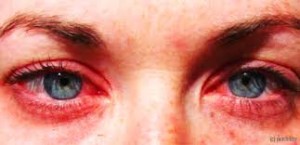 Allergic reactions are more common occurrences than you might otherwise believe because allergic reactions can encompass anything from a sty in the eye to life-threatening anaphyllactic shock. An allergic reaction is the body’s way of responding to a perceived “invader” or foreign substances called antigens. These protein antigens will trigger the immune system. In the case of individuals who suffer from allergic reactions this response is often a hypersensitivity reaction. This means that the reaction is above and beyond what is necessary in order to protect the body from a particular antigen.
Allergic reactions are more common occurrences than you might otherwise believe because allergic reactions can encompass anything from a sty in the eye to life-threatening anaphyllactic shock. An allergic reaction is the body’s way of responding to a perceived “invader” or foreign substances called antigens. These protein antigens will trigger the immune system. In the case of individuals who suffer from allergic reactions this response is often a hypersensitivity reaction. This means that the reaction is above and beyond what is necessary in order to protect the body from a particular antigen.
Almost anything can be an allergen, such as dust, pollen, medication, insect venom, animal dander, viruses and bacteria. Reactions will also vary between a small skin rash and itchy eyes to an all over body rash. The reaction can also include one or several symptoms.
Allergies are very common and account for more than 17 million visits to the doctor on an annual basis. More than half of these visits are for seasonal allergies. An allergic reaction may not happen the first time you’re exposed. For example, you might be stung by a bee and the first time only have pain and redness. The second time you may have hives or difficulty breathing because the immune system now responds in a hyperactive way to that protein or allergen.
Allergies also occur with other diseases such as asthma, ear infections, sleep apnea and sinusitis. When the allergen enters the body a reaction occurs in the immune system. The immune system activates a protective antibody called Immunoglobulin E to fight invading substances. Even though everyone has IgE in their body, those who have allergy problems have an unusually large amount. This army of antibodies attacks the allergic substance and invariably injures mast cells. When these cells are injured or irritated they release histamine which results in an allergic reaction.
Anaphylaxis is the life threatening severe form of allergic reactions that affects a number of different areas of the body all at one time. Severe anaphylaxis is often fatal unless the individual is able to reach an emergency room immediately. Anaphylaxis is triggered by subst ances that are either injected or ingested but gain access to the bloodstream. It is highly unusual for someone to have an anaphylactic reaction to an allergen which is inhaled.
ances that are either injected or ingested but gain access to the bloodstream. It is highly unusual for someone to have an anaphylactic reaction to an allergen which is inhaled.
Because allergic reactions can progress and worsen, medical attention is recommended for all but the most minor and localized symptoms. If these symptoms become worse over a few days, or if they don’t get better with the recommended treatment protocols, you should also consult with your primary care physician. Any reactions to medications which are prescribed, that falls under the heading of drug allergies, should also be reported to your physician so medications in this same category will not be prescribed again and a new medication can be prescribed to treat the initial problem.
For typical reactions, your health care provider will do a thorough medical history and physical examination. Blood tests and x-rays or other imaging studies are not necessary unless there are very unusual circumstances.
Individuals who are allergic should avoid their triggers because with repeated exposure the allergic reaction can get significantly worse. For example, someone who has a latex susceptibility can increase their reaction to a full-blown allergy if they are consistently exposed to latex.
Self care is not enough for an individual who is suffering from a severe reaction at home. In this case, do not attempt to wait out any reactions but go immediately to the hospital emergency room. If no one is available immediately call an ambulance for emergency medical transport. Do not attempt to drive yourself!
If you’ve had an epinephrine auto-injector prescribed use it. It may also be helpful to take a single dose of antihistamine at home prior to reaching the emergency room. Once you reach the hospital, emergency medical physicians will begin treatment with antihistamines and corticosteroids to reverse the histaminic response in the body. You may find that you must stay in the hospital for anywhere from a couple of hours to a couple days in order to be fully treated.
It is important to identify any allergic response which you may have and discuss it with your primary care physician. Don’t wait until your allergic reaction becomes life-threatening.
Resources:
MedlinePlus: Allergic Reactions
http://www.nlm.nih.gov/medlineplus/ency/article/000005.htm
American Academy of Allergy, Asthma and Immunology: Allergic REactions: Tips to Remember
http://www.aaaai.org/conditions-and-treatments/library/at-a-glance/allergic-reactions.aspx
KidsHealth.org: Serious Allergic Reactions
http://kidshealth.org/teen/safety/first_aid/anaphylaxis.html
University of Maryland Medical Center: Allergic Reactions
http://www.umm.edu/ency/article/000005.htm
National Institute of Allergy and Infectious Disease: Food Allergy
http://www.niaid.nih.gov/topics/foodallergy/Pages/default.aspx
Northwestern University: Kids with Food Allergies Can Fall Through the Cracks
http://www.northwestern.edu/newscenter/stories/2012/09/kids-food-allergies-fall-through-cracks.html
Congressionally Directed Medical Research Programs: Genetic Studies of Food Allergies
http://cdmrp.army.mil/gsfarp/default.shtml


Leave a Reply